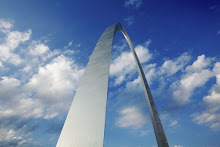Well, this is surprising. Some of the Bites on the American Plate list are so common that it'd be an event if I didn't eat them twice a week. Some are more specialized, but I know exactly where to go to pick some up. A few present a significant challenge. And then there's beaver tail, for which I fully expected I'd have to skip and substitute something else. I even called it out with some certainty in my initial post as being impossible to track down. Turns out, I was wrong! Tiddy has a list project of his own, which involved stopping by the Soulard Farmer's Market, and lo and behold, one of the vendors there was selling full beaver carcasses, complete with tail. I jumped at the chance, and good thing I did, because the vendor told me I was snagging the last one of the season. Are beavers secretly popular?
The book's entry on beaver tail essentially breaks down into two topics: The fact that people don't really eat this anymore, and a description of the two groups that did, in fact, eat it more out of necessity than anything else. Early Native Americans, of course, had very active lifestyles, and needed the caloric bomb that the fatty beaver tail provides. The other big group was fur trappers, who had to spend the winter out tracking down materials for coats, collars, and hats. Beavers were extremely handy from a trapper's point of view; the pelt could be sold, and the tail could be eaten. Beaver populations actually dwindled in the east because of all this trapping, which helped spur western expansion. Heck, I live in St. Louis, which was founded by fur traders.
Buying beaver was the first step; figuring out what to do with it was the next challenge. The book includes a preparation for grilling the tail, but we had an entire animal on our hands. Lots of internet articles and YouTube videos were consulted. The tail was relatively simple, once the messy work of chopping it off was done. Tiddy did all the butchering work on this one (for which I definitely owe him one), and we took it over to his parents' place. They were excited to be part of the process, and his stepdad grilled the tail on a charcoal grill until the skin bubbled up and I could peel it off. I prepared a quick marinade of Cajun seasoning, butter, and black pepper, and we brushed it on the meat and re-grilled until it was done.
How did it taste? Well, the book refers to it as "gamey-tasting fat with swampy overtones," and I can't improve on that description. I'm glad I ate it, but am not in a hurry to do it again. As to the rest of the beaver, Tiddy carved off a pound or so, and incorporated it into a gumbo with andouille sausage and other Cajun seasonings. Served on rice with some corn on the cob on the side, it was pretty damed tasty! Again, probably not worth the work of carving up a rodent, but made for a decent lunch, and a fascinating experience.
Read more »
The book's entry on beaver tail essentially breaks down into two topics: The fact that people don't really eat this anymore, and a description of the two groups that did, in fact, eat it more out of necessity than anything else. Early Native Americans, of course, had very active lifestyles, and needed the caloric bomb that the fatty beaver tail provides. The other big group was fur trappers, who had to spend the winter out tracking down materials for coats, collars, and hats. Beavers were extremely handy from a trapper's point of view; the pelt could be sold, and the tail could be eaten. Beaver populations actually dwindled in the east because of all this trapping, which helped spur western expansion. Heck, I live in St. Louis, which was founded by fur traders.
Buying beaver was the first step; figuring out what to do with it was the next challenge. The book includes a preparation for grilling the tail, but we had an entire animal on our hands. Lots of internet articles and YouTube videos were consulted. The tail was relatively simple, once the messy work of chopping it off was done. Tiddy did all the butchering work on this one (for which I definitely owe him one), and we took it over to his parents' place. They were excited to be part of the process, and his stepdad grilled the tail on a charcoal grill until the skin bubbled up and I could peel it off. I prepared a quick marinade of Cajun seasoning, butter, and black pepper, and we brushed it on the meat and re-grilled until it was done.
How did it taste? Well, the book refers to it as "gamey-tasting fat with swampy overtones," and I can't improve on that description. I'm glad I ate it, but am not in a hurry to do it again. As to the rest of the beaver, Tiddy carved off a pound or so, and incorporated it into a gumbo with andouille sausage and other Cajun seasonings. Served on rice with some corn on the cob on the side, it was pretty damed tasty! Again, probably not worth the work of carving up a rodent, but made for a decent lunch, and a fascinating experience.
























